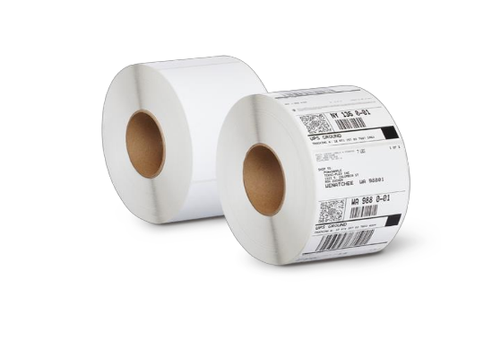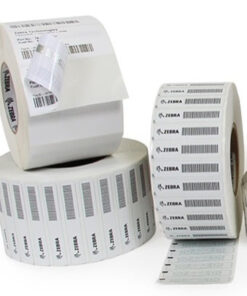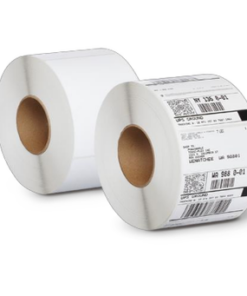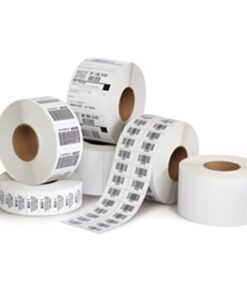RFID Labels
RFID labels, also called smart labels and most common types of passive RFID tags, are paper or plastic (usually vinyl) labels that include an embedded RFID inlay. Smart labels have adhesive and are often used for “slap and ship” operations in conjunction with RFID printers/encoders for simple RFID tracking. They come in various sizes, most common are 4 x 6 inches, 2 x 4 inches or 1 x 2 inches but you can get also labels of other sizes and shapes.
For more information about passive RFID tags, please visit How to select a correct RFID tag – Active vs. Passive.
Our selection of RFID labels constantly changes, so please check back often and let us know if you need help selecting or locating a label for a particular application!
Rfid labels LF
Low-frequency (LF) RFID tags: 30 KHz to 300 KHz
LF RFID tags have slower read rates and shorter read ranges than UHF or HF, but they’re less susceptible to interference by liquids and metals because they have a longer wavelength. Because of this, they’re often used in applications where an RFID label is affixed to a metal substrate, such as inventorying beer kegs or automobiles.
High-frequency (HF) RFID tags: 3 to 30 MHz
HF RFID tags have longer read range and higher memory capabilities, making them well-suited to cataloging library media or for use in tracking bracelets for theme parks. Within the HF RFID category are a common type of smart label: Near field communication (NFC) tags.
See some more applications of the RFID LF <<<Here>>>
RFID labels UHF
Ultra-high-frequency (UHF) RFID tags: 300 MHz to 3GHz
UHF RFID tags are considered the “supply chain frequency” because they’re generally lower priced than the other types, while still providing good read ranges and rates. Common applications include item-level tracking, retail inventory control and driving supply chain efficiencies.
Wal-Mart, Target and the Department of Defense (DoD) mandate that their suppliers provide RFID tags with every product and pallet. This reduces the need for manual inventorying, as hundreds of tags can be read simultaneously. And it allows them to more accurately identify incoming inventory by reading entire truckloads of products at a time.
See some more applications of the RFID LF <<<Here>>>
- AGV’s & AGC’s
- Animal Livestock & Cattle RFID Tags
- Assets
- Consumables
- Factory Floor/Process Controls
- Fueling
- High Temperature
- Industrial Identification
- Laundry/Linens/Uniform
- OEM & Custom Development
- Pallets
- Personnel Identification
- Supply Chain Visibility
- Temperature Sensing
- Vehicle Identification
INDUSTRIES

 0988.810.925
0988.810.925








